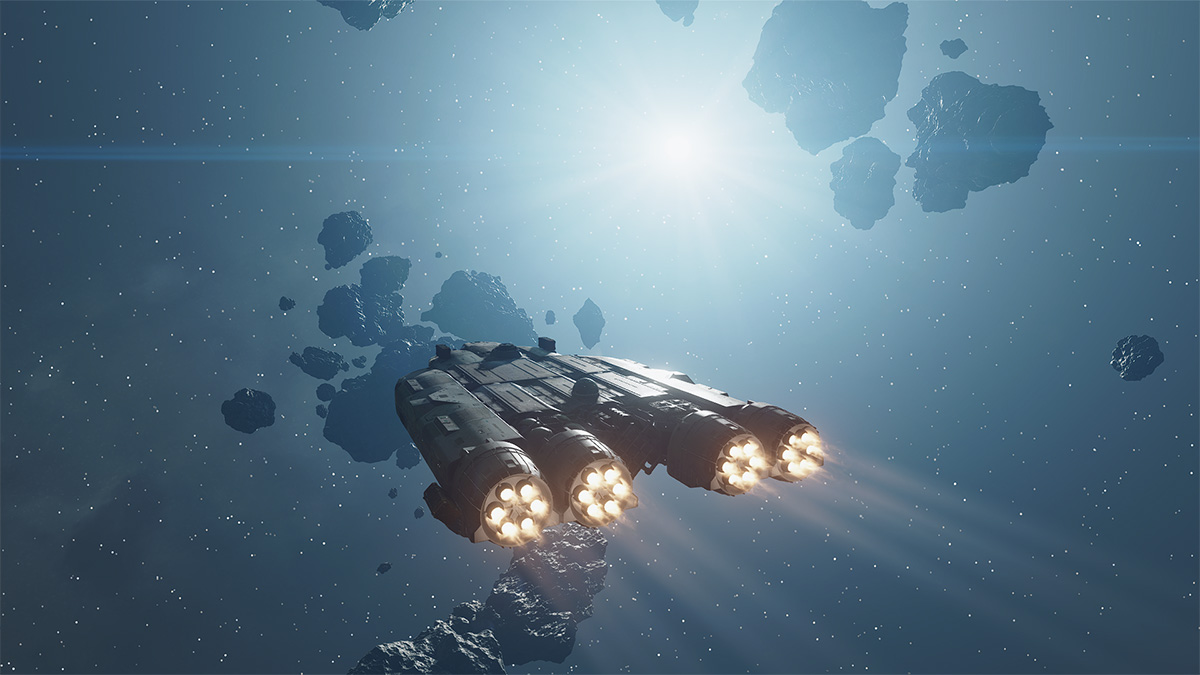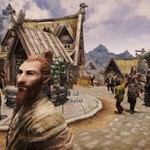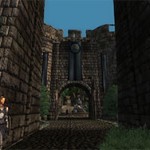A lot of crap has been thrown at Starfield since its launch. It’s still going on. Some even go to the extent of saying that it’s the worst game of the decade (how!?). Forums like the Starfield subreddit are full of cohorts of people who hang out in the sub and constantly trash the game and spam the comments section about how bad the game is even as they openly admit that they are not playing the game. They even rebuff those who like the game. Their approach seems like “I don’t like this game so you shouldn’t either”. Content creators add to this cacophony by constantly trashing the game and their audience gets even more worked up. It has been a crazy self-reinforcing cycle of negativity. I’m not even going to insinuate that they are doing this because they are getting views from these lot – it doesn’t take two brain cells that they are doing exactly that.
Meanwhile, I and a lot of other people who have been playing the game on and off without having paid much attention to the online cacophony for a long while are dumbfounded: “The hell? Are we talking about the same game?” People who have been playing the game on other platforms like Gamepass etc have started dropping into online forums and posting about their surprise at the big gap between their perception of the game and the constant trashing. Is the game bad? But they have been playing it all along and it looks ok? And yet the trash-talkers tell them that they are wrong because ‘the game is bad’. Obviously, those people can’t understand why it is bad. So it needs to be explained – so that the lowly noobs who made the error of liking the game can be set straight by ‘those who know better’.
It takes a lot of paragraphs to analyze and explain why this trash-talking exists and why the people who do it go to this extreme extent to keep doing it. But this is not what I’m going to talk about today. I want to tell you why Starfield is already a good game and how it will get even better over the years.
Subscribe to Quantum Joystick Here:
(you will also get updates when a new posts are out)
First: We Played Hundreds Of Privateer Clones And We Didn’t Need Another – Starfield Breaks This Slump
There have been hundreds of games with the privateer format over the last two decades. One after another, their format and gameplay have always been the same:
- You start as a down-on-his/her-luck nobody or some disgraced persona
- You have scarce resources, money, whatever
- You may have a very bad starter ship or you may not have one but you may acquire one bad starter ship
- You keep doing missions and/or trading to make money and upgrade the ship
- You start a main quest that pushes forward a middling story while also helping you upgrade your ship
- You do some side quests and engage in some side gameplay mechanics to upgrade your ship
- Throughout the game, you upgrade your ship and push the story forward
- At one point in time, the main story gets a middling climactic resolution. You saved the galaxy or some other crap
- You can keep grinding and doing side quests and extra gameplay mechanics or maybe not
That’s it. The entire story of the privateer clones of the last two decades. A few of them boost and expand a bit on one or a few of the elements above, a lot of them don’t and that’s it. One of the most celebrated ones among them, Elite is still stuck in the 1980s paradigm: You didn’t even have space legs until recently and your entire existence in the Elite universe was ‘being a ship’. Like in the 1980s when hardware was very weak and there weren’t enough resources to even make the ship appear like a ship, even less making its pilot appear, and even less, creating a living, breathing universe.
But Starfield broke this paradigm…
It brought a vast universe (albeit, yet rather empty – more on this later) which created a believable enough in-game world that combined everything that all the privateer clones and sci-fi games had into one package, and added all that they have been missing into one coherent package:
We can wake up in our space bed, go to the space kitchen, and make space coffee now. We can do research and manufacturing in our space workshops. We can arrange our space furniture and space storage. We can build our own spaceships and carry space cargo to do space trading. We can do space missions that involve everything all the other games had from space fights to gunfights to science and exploration. We can build our own space outpost. We can join space factions and have space apartments. We can do space adventurer rp with space skills. We can have space companions. We can visit space cities and space stations and buy spaceships. And many more space stuff. All of this exists in the game without another mechanic being sacrificed, if not outright removed, for the sake of the other.
So, Starfield combines all the previous space games’ existing mechanics and what they have been missing into one coherent package.
Even if one or few of the mechanics are a bit lacking, and various of them seem to have been put in as placeholders, all these mechanics exist and are playable. Over time they will certainly get more fleshed out and more mechanics will be added. Therefore Starfield looks like an already complete space game that provides everything that the others had and also what others lacked, even if it appears a bit too wide to fill in everything yet.
This means that all of this will improve and more will be added.
All of these mechanics will be expanded more by Bethesda and the modding community. And even more mechanics will be added by Bethesda and the modding community.
It will be possible to live a complete space life in Starfield by doing everything ranging from eating in a sci-fi world to running a shop in a spaceport, from running a star-spanning company to running space stations, from running your own faction to being a city mayor. Yes, a lot of games had one or more of these mechanics until now. But no sci-fi game had them all and had them all coherently.
So Starfield looks like us gamers’ best bet to live that space life that we always dreamed of since the early days of gaming but never have gotten around to.
…which brings us to the second thing:
Second: The Game World Is Big – Yet Not So Full – But Already Big

Sure, New Atlantis still looks like a smallish university campus despite being the biggest Bethesda city yet. And even despite being one of the biggest fully-explorable, interactable in-game cities. Akila City is only as large as a small frontier town that looks not like the capital of the second biggest starfaring faction but a small-time Western town of cattle herders – walking in the mud…
But they are already bigger than all that was before it, and they will get only bigger with future content and mods.
Some talk about how big the Night City from Cyberpunk is compared to the cities in Starfield.
It looks big.
Otherwise where you can go and what you can do is limited. You can’t access all buildings, all zones, go to all the places in the city. They exist there for immersion.
True, Starfield also limits some things, like how you can’t go to all the floors in the towers in New Atlantis, etc. But compared to other in-game cities, it’s already big and excessively interactable.
But what’s more important aside from being already the biggest, interactable city, it has almost infinite room to expand.
Like the rest of the in-game world of Starfield.
Before Starfield, all the in-game worlds were limited even worse than how Night City is limited. It was too expensive to make actual cities, and even more expensive to allow the player to interact with them. For that reason, game makers avoided even attempting it and we as gamers had to do with staying within the limits that were excessive compared to how much hardware and software developed and what they could do. So, instead, they leaned on boosting what they could boost by ignoring the elephant in the room that was the scale of their universes. All the subsequent clones after Privateer boosted one part of the gameplay or a few. All of them heavily leaned on the graphics. So we ended up with ships, ports, etc with shiny, polished graphics, but the universe and the in-game world and what could be done in it has always been limited.
Maybe you could go out to ‘the city’ and go to a few ‘districts’ that you were allowed to see. The rest was either non-existent or represented by background images. That was it – that was ‘the game world’. How this could be any different, in a way, for even in RPG games that are famous for their world-building, it was the same – the best of them created interactive, immersive, but small worlds – like how Skyrim was too small that you would end up with an encounter or a quest giver’s enemy/target every 100 meters. Man… You are just 50 steps away from your enemies. If you so much spit in the wind, you can hit them. Just use your super-powerful or magical weapon and take a shot at them… But of course no – this was the extent of the world due to being limited with hardware and resources and we had to just gloss over it.
But with Starfield this changed.
A scale that was not seen before in games is already there. Even if it looks a bit unpopulated due to being very big.
And it will eventually fill up with many, many things that all the games before it could not handle and fit into the scale of their game world without becoming unbelievable or infeasible.
It’s an already big game that also doubles as a gigantic canvas for Bethesda and the modding community to paint. And paint, they will – actually, they already are: Starfield had 400 mods before its launch, 600+ mods within a week, now it’s too many to count and the creation kit for creating mods is not even out yet!
…which brings us to what will happen over the years.
Starfield Will Become Probably The Best Space Game
There is so much room for adding things, there are so many mechanics that can be expanded, and there are so many that can be added that Starfield is just going to keep improving every year.
Existing cities will become bigger. They will have more amenities, gameplay mechanics, NPCs, quests, stories, and everything.
New cities will be added. They will be big or they will increase in size over time just like the existing ones.
Planets will get more lively. More cities, creatures, flora, fauna, more things to do.
There will be realistic, believable space trading.
There will be realistic, believable, large-scale space battles and land battles.
There will be mechs, eventually.
Akila City will get streets and pavements.
There will be many more spaceships.
There will be countless spaceship modules.
Existing stories will be revamped and new stories will be written.
Player space stations will be a thing.
The space will be more lively and NPCs, factions will be doing things in it.
There will be more technologies, parts, and mods.
There will be realistic, believable farming.
Players will create space companies and factories.
Every other year, Starfield’s universe will become a more lively, active, immersive place. And, over time, it will become the space game that gives us the possibility of immersing ourselves in a believable, wide sci-fi game universe and living a space life – something which all the earlier space games failed to give us in one way or the other. And it’s about time too – with all the power that modern gaming hardware and software have – not to mention the immense cash that the major game companies have – we should have gotten to that point much sooner.










